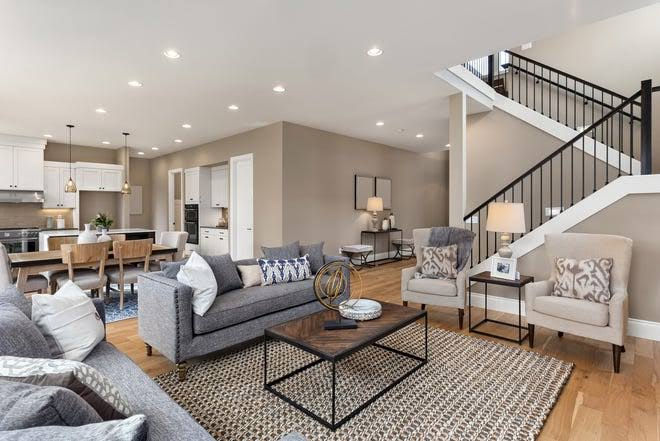
Home Staging
- ddanon127
- Jun 15, 2024
- 3 min read
Home staging is the process of preparing and presenting a property for sale in a way that makes it appealing to the widest range of potential buyers. The goal is to enhance the home's appearance, highlight its strengths, and create an inviting atmosphere that helps buyers visualize themselves living there. Here’s a detailed explanation of home staging:


### Key Elements of Home Staging
1. **Decluttering**:
- Remove excess items to create a clean, spacious look.
- Organize storage areas to demonstrate ample space.
2. **Depersonalization**:
- Remove personal items like family photos and memorabilia to allow buyers to envision the space as their own.
3. **Cleaning**:
- Thoroughly clean every part of the home, including carpets, windows, and appliances, to make it look well-maintained.
4. **Repairs and Maintenance**:
- Fix minor repairs such as leaky faucets, cracked tiles, and chipped paint.
- Ensure all systems (plumbing, electrical) are in good working order.
5. **Neutralizing**:
- Use neutral colors for walls and furnishings to appeal to a broader audience.
- Avoid bold colors or unique styles that might not suit everyone’s taste.
6. **Furniture Arrangement**:
- Arrange furniture to maximize space and create a comfortable flow.
- Use appropriately sized furniture to make rooms look balanced and functional.
7. **Enhancing Curb Appeal**:
- Improve the exterior appearance with landscaping, painting, and cleaning the front entrance.
- Ensure the lawn is mowed, plants are trimmed, and pathways are clear.
8. **Lighting**:
- Use a mix of natural and artificial lighting to brighten up the home.
- Replace old light fixtures and add lamps where necessary to create a warm, inviting atmosphere.
9. **Adding Accessories and Decor**:
- Use tasteful accessories like throw pillows, rugs, and artwork to add color and interest.
- Fresh flowers and greenery can bring life to the space.
10. **Creating Focal Points**:
- Highlight unique features of the home, such as fireplaces, built-in shelving, or architectural details.
- Arrange furniture and decor to draw attention to these features.
### Benefits of Home Staging
- **Increased Appeal**: Staging makes a property look more attractive, helping it stand out in the market.
- **Faster Sale**: Well-staged homes often sell faster than non-staged homes because they make a positive first impression.
- **Higher Sale Price**: Buyers are often willing to pay more for a home that looks move-in ready and well-maintained.
- **Emotional Connection**: Staging helps buyers emotionally connect with the home, making it easier for them to imagine living there.
- **Competitive Edge**: In a competitive market, staging gives a property an edge over others that are not staged.
### Professional Home Staging Services
Many sellers hire professional home stagers who have expertise in design and understand market trends. These professionals can provide a range of services from simple consultations to full-service staging, which includes providing rental furniture and accessories.
### DIY Home Staging Tips
- **Start with the Entryway**: The first impression matters, so focus on creating an inviting entryway.
- **Keep It Simple**: Less is more in staging; avoid overcrowding spaces with too many items.
- **Highlight Natural Light**: Open curtains and blinds to let in natural light.
- **Use Mirrors**: Strategically place mirrors to make rooms appear larger and brighter.
- **Define Spaces**: Clearly define each room's purpose, especially in open-concept homes.


### Conclusion
Home staging is a strategic marketing tool that can significantly impact the sale of a property. By presenting a home in the best possible light, sellers can attract more potential buyers, facilitate quicker sales, and achieve higher sale prices. Whether hiring professionals or doing it yourself, effective home staging can transform a property and make it more appealing to buyers.




Comments